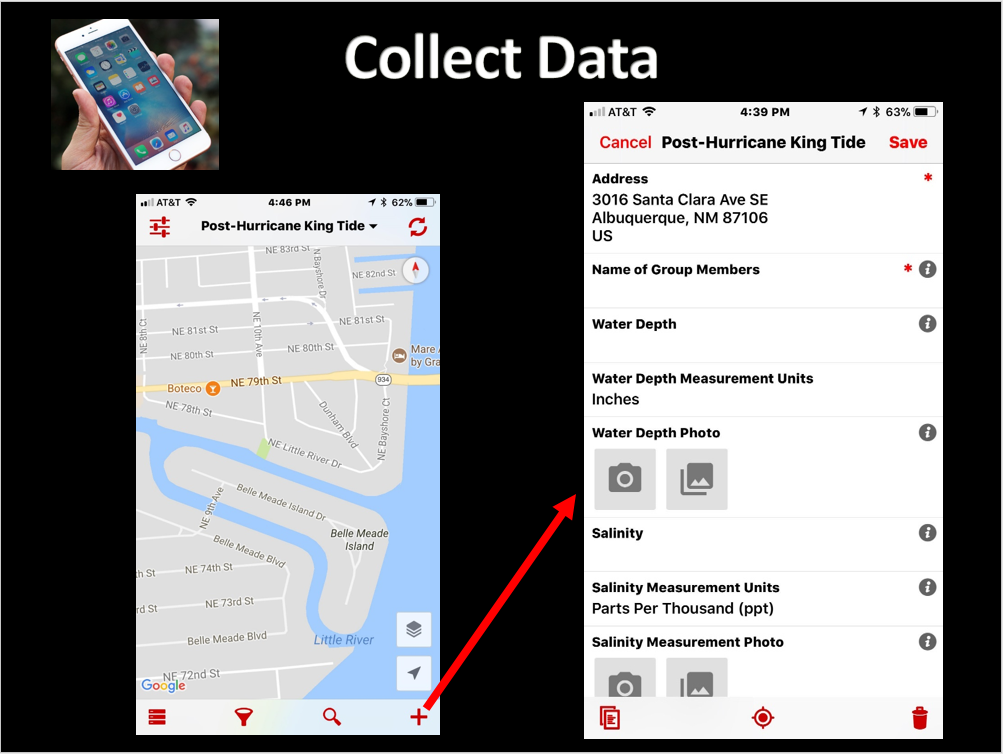By Colette Hochstein (NLM)On October 12th, 2017, the National Library of Medicine Disaster Information Management Research Center (DIMRC) collaborated with Community Health Maps (CHM) to host a webinar focused on using mapping tools during disasters. The meeting was attended by 128 professionals, including first responders and receivers, emergency planners, and public health librarians, many of whom are involved, directly and indirectly, with disaster relief efforts. DIMRC provides access to health information resources and technology for disaster preparedness, response, and recovery; CHM provides users with information and training on low-cost mapping tools that can be used to collect data related to health hazards in communities, including during disasters. Many community-based organizations can better serve their constituents when they are able to collect and maintain their own data; CHM seeks to provide them with the training and tools needed to carry out cost effective and scalable mapping.After the basic premise of CHM was explained to webinar attendees, several case studies illustrating the different applications of CHM were detailed. One took place in Seattle, Washington and centered on mapping noise pollution in different neighborhoods. The primary focus of this case study was to provide useful insight into the public health concern of noise pollution, which has been linked to various health conditions. Other goals included offering recommendations on the scalability of the Urban Indian Health Organization (UIHO) network and measuring and testing the usability of the CHM GPS/GIS workflow.Another study described how CHM was used to map “King Tides” in Miami, Florida, and was CHM’s first opportunity to work in the field with users of its workflow. The goal was to communicate health risks associated with the 2017 King Tides during their highest activity, and to demonstrate how the flooding affects local communities. It was also a good test case of successfully using the tools in challenging field conditions.Overall, the webinar provided the audience with information on the resources offered by CHM and demonstrated how different populations and communities, such as communities affected by disasters, can use CHM to collect and interpret their own data. You can watch the webinar by clicking on this link.
DIMRC provides access to health information resources and technology for disaster preparedness, response, and recovery; CHM provides users with information and training on low-cost mapping tools that can be used to collect data related to health hazards in communities, including during disasters. Many community-based organizations can better serve their constituents when they are able to collect and maintain their own data; CHM seeks to provide them with the training and tools needed to carry out cost effective and scalable mapping.After the basic premise of CHM was explained to webinar attendees, several case studies illustrating the different applications of CHM were detailed. One took place in Seattle, Washington and centered on mapping noise pollution in different neighborhoods. The primary focus of this case study was to provide useful insight into the public health concern of noise pollution, which has been linked to various health conditions. Other goals included offering recommendations on the scalability of the Urban Indian Health Organization (UIHO) network and measuring and testing the usability of the CHM GPS/GIS workflow.Another study described how CHM was used to map “King Tides” in Miami, Florida, and was CHM’s first opportunity to work in the field with users of its workflow. The goal was to communicate health risks associated with the 2017 King Tides during their highest activity, and to demonstrate how the flooding affects local communities. It was also a good test case of successfully using the tools in challenging field conditions.Overall, the webinar provided the audience with information on the resources offered by CHM and demonstrated how different populations and communities, such as communities affected by disasters, can use CHM to collect and interpret their own data. You can watch the webinar by clicking on this link.